1
Mother Rocking a Child
1920's
Saskatchewan, Canada
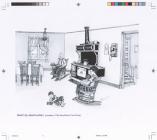 Credits:
Credits:
Assiniboia Museum
2
During family illnesses, cold, bruises, etc. the homemaker responded as best as she could with empathy and with folk medicine available to her. The following are only a few solutions and remedies - books have been written on the subject.
3
Remedies
1920's
Saskatchewan, Canada
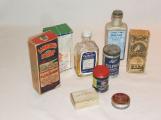 Credits:
Credits:
Assiniboia Museum
4
The old stand by was the cod liver oil during winter months for the vitamin D to ward off colds - cost 50 cents. Laxative was another item available in the home. An example of this was seen in the image at left - "Imperial Saline - valuable first aperient: Cough medicine was prevalent but there were home remedies such as tea, lemon juice and honey. Chicken soup was a cure-all as well as garlic! In this image the sulphur product had human uses as well as for plants. The information on the container:
"Skin Diseases - Use an ointment made with sulphur and Vaseline".
5
Epsom Salts for Human and Technical Uses
1920's
Saskatchewan, Canada
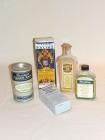 Credits:
Credits:
Assiniboia Museum
6
Epsom salt was used also as a laxative as well as soothing foot baths. These salts did double duty - "Technical Uses: A strong solution added to whitewash gives a beautiful whiteness to walls and ceilings". It also claimed to increase the stiffing properties of starch. Syrup of Tar was used for coughs, colds, and sore throats. To view the labels more closely - click on the image to enlarge the items.
7
Traveling Salesman's Products
1920's
Saskatchewan, Canada
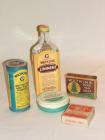 Credits:
Credits:
Assiniboia Museum
8
Many remedies were available from the traveling Watkins and Rawleigh salesmen. Such items as seen in this image: a bar of Pine tar Soap, liniment, ointment, and germicidal soap.
9
Items for Making Mustard Plaster
1920's
Saskatchewan, Canada
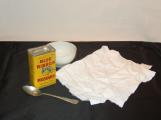 Credits:
Credits:
Assiniboia Museum
10
Mustard plasters were a very common remedy in the early years and are seldom used at the present. The mixture of equal amount of dry mustard and flour mixed with a bit of water to make a paste, covering on one side of the flannel, fold over and placed on the patient's (victim's) chest. This was an aid to congested lungs. To recycle the flannel the mustard paste may have been placed on a piece of newspaper placed between the folded flannels.




